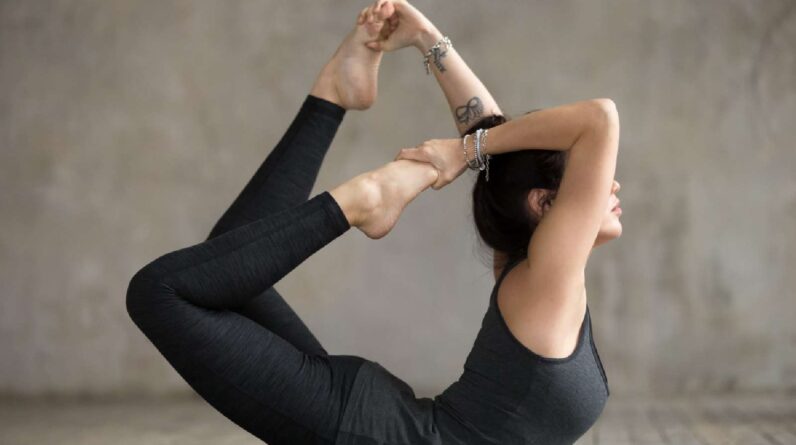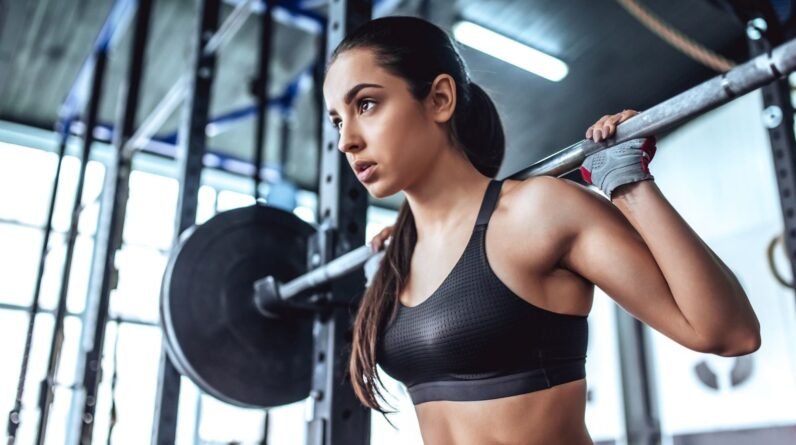
Want to challenge yourself by doing difficult yoga poses? There are some hard yoga poses that are challenging and good for your health too.
Beginner yoga poses are meant to introduce people to the ancient wellness practice. Once you are done with the simple moves, you can gear up for more challenging asanas or poses. Some yoga poses are difficult to perform due to their complexity, requiring a high degree of flexibility, strength, and balance. They are advanced yoga poses, which you can do to challenge yourself while also reaping their health benefits. If you want to try difficult yoga poses, start gradually with the help of a yoga expert. Make sure not to force your body, as that may cause pain or injuries.
Difficult yoga poses to challenge yourself
People are often pulled towards yoga, as they offer health benefits. Yoga can ease stomach issues like constipation, according to research published in the Journal of Bodywork and Movement Therapies in 2021.

During a 2016 review published in the Journal of Orthopedics and Rheumatology, yoga was found to be effective in reducing pain in the lower back.
After nailing the simple asanas, you can move on to hard yoga poses to enjoy health benefits. Here are some of the asanas you can do:
1. Paryankasana or couch pose
- Start the couch yoga asana in a kneeling position.
- Slide your feet outside your hips while keeping your knees together and feet straight.
- Lower your upper body with your palms on the floor and elbows for support, lying supine with legs folded and toes inward.
- Rest on the floor, interlace your fingers, and place your palms on lower ribcage.
- Move your hands to the sides, use your palms and elbows for support, and lift your upper body.
“Paryankasana helps stretch and strengthen the lower back and hips, improving flexibility and reducing lower back pain,” says yoga expert Dr Hansaji Yogendra.
You may also like


2. Halasana or plough pose
- Keep your legs straight and lie on your back.
- Lift both your legs in a semi-circle over your head to touch the floor behind you, with toes pointed out, and your palms pressing down.
- To release, lift your legs up, lower your back, and return your legs to the starting position.
Halasana stretches the spine, shoulders, and legs, and stimulates the thyroid gland and abdominal organs. This helps aiding in digestion and improving metabolic function.
3. Dhanurvakrasana or bow pose
- Lie on your stomach with your forehead on the mat, legs straight, and toes out.
- Grasp your ankles, keeping your knees together.
- Lift head, arch spine, and pull legs up to form a bow shape with toes pointing up.
- Hold then lower your head and release your ankles.
Dhanurvakrasana strengthens the back, legs, and core, stimulates the digestive organs and boosts blood circulation in the abdominal organs.
4. Sarvangasana or shoulder stand
- Lie on your back as you keep your feet together.
- Lift both your legs straight up.
- Raise your arms, hold your waist, and push your body upwards.
- Adjust your hands to support your lower back, and shift weight to your shoulders.
- Hold then bend your knees towards head and lower your hips to the mat with the support of your hands.
“This pose enhances blood circulation to the thyroid gland,” says the expert.
5. Ardha-Matsyendrasana or half lord of the fishes pose
- Sit with your legs stretched out to do the half lord of the fishes pose.
- Fold your left leg, pressing your heel towards the perineum.
- Put your right heel beside your left knee.
- Twist your trunk right while holding your right ankle with your left hand.
- Twist further, and bring your right hand behind your back to your left thigh, turning your neck towards your right shoulder.
- Hold the pose then untwist trunk and neck, return right hand to side, and unfold feet.
Ardha-Matsyendrasana enhances spinal flexibility and strengthens the back and core, it stimulates the digestive organs and helps detoxify the body.
6. Padmasana or lotus position
- Sit down with your legs properly stretched out.
- Bend your right leg, placing your heel at the root of your left thigh.
- Keep your left heel at the root of your right thigh.
- Rest your left hand below your navel with your palm up, and place your right hand over it.
Padmasana looks simple, but it is not. “It improves flexibility in the knees and ankles, promoting better posture and alignment. It also calms the mind and helps in improving concentration,” says Dr Hansaji.

7. Ushtrasana or camel pose
- Kneel on the mat, lean back, and place your arms behind you with fingers on the ground.
- Lift up your pelvis, push your upper body upward, and let your neck fall back.
- Hold the pose then draw your upper torso back, straighten your neck, and return to kneeling.
‘It stretches and opens the chest, and shoulders, improving spinal flexibility and posture,” says the expert.
8. Ganda bherundasana or chin stand
- To do chin stand, begin in downward-facing dog pose or adho mukha svanasana.
- Roll forward to plank, as you bend your elbows.
- Roll forward and make sure your chin, shoulders and chest are in contact with the yoga mat.
- Curl your left toes and grip the mat. Lift your right leg up, and bend the left one.
- Support your right leg with your left foot, and push it higher.
- Lift your left leg to meet the right one.
- Stretch both your legs upward, as you rotate your inner thighs towards each other and squeeze them.
It strengthens the back, hips, and legs while improving flexibility and balance.
Don’t rush through steps or overstretch, as it can lead to strain and injury. “If you don’t practice these difficult yoga poses properly, you can end up with with muscle strain, and injuries,” says the expert.
When it comes to difficult yoga poses, it is crucial to progress slowly and mindfully. Do warm-up exercises to prepare your body for hard yoga poses.







